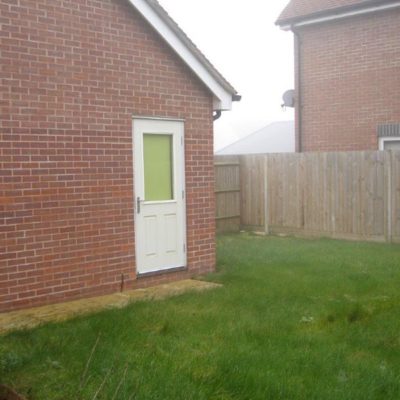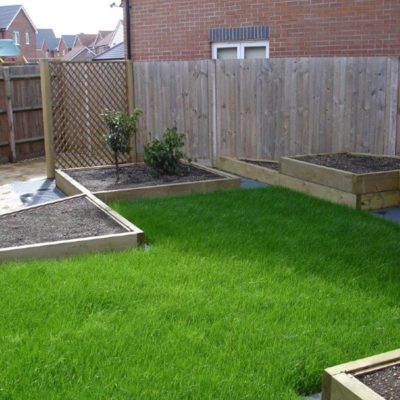Designing on the Diagonal

Garden designers often like to tilt the orientation of a garden so that, for example, lawns and paths run at an angle to the house and boundaries. This can be useful for creating more of a sense of space, with longer vistas, and for helping to disguise the often very rectangular shape of modern small gardens. I find, however that I rarely use this design technique as it can lead to a garden having lots of little odd angular corner wedges, and if not done sensitively, can look rather contrived and awkward.
Recently, however, I was asked to design the garden of a new home in Three Mile Cross, where tilting the garden lines across the garden offered the ideal solution. The small L-shaped garden had been left by the builders with a tiny patio and an expanse of poor lawn over what can only be described as awful sub-soil!
Why Diagonal?
Designing on the diagonal here enabled us to make the best possible use of a small space:
- retaining a reasonable sized (new) lawn
- giving the clients a large patio space
- providing lots of room for planting in the raised beds
As an aside – the raised beds have been filled with a screened grade A top soil / compost mix. In fact we removed a vast amount of the existing soil and sub-soil throughout the garden, and replaced it with new topsoil.
The Result
Once the beds have been planted, the rectangular nature of the site, and the views of the fences and walls will be softened and greened. Tucked away behind the garage will be a small shed, compost and a bin store. We even managed to find room for a little bench in the recess in the far raised beds.
The result? A lot squeezed into a small garden while retaining a sense of space – and a subtly contemporary feel – by designing on the diagonal.
The ALDA team finished the main landscaping in early September, so as you can see, the garden is very new. The new lawn has bedded in well and is ready for it’s first cut, and the clients, who are keen gardeners, are itching to crack on with the planting, which they are going to enjoy working on themselves in their new garden. And I am hoping to be invited back next year to see how the garden is progressing!







